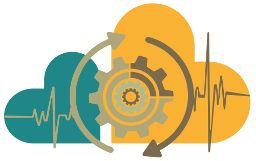Workflows
What is a Workflow?Filters
From metagenomes to peptides
Type: Nextflow
Creators: Sabrina Krakau, Leon Kuchenbecker and Till Englert
Submitter: WorkflowHub Bot
The workflow begins with the Database Generation process. The Galaxy-P team has developed a workflow that collects protein sequences from known disease-causing microorganisms to build a comprehensive database. This extensive database is then refined into a smaller, more relevant dataset using the Metanovo tool.
Second part of the ecoregionalization
This workflow allows you to create an ecoregionalization map from occurrences and environmental data using a boosted regression trees model for predictions.
The workflow is intended for processing occurrence data, which should include latitude, longitude and species presence or absence. You can use example test data available with the workflow, highlighting a use case centered on the Dumont d'Urville sea region and benthic invertebrates. The primary goal of ...
Part 1 of ecoregionalization workflow
This workflow allows you to create an ecoregionalization map from occurrences and environmental data using a boosted regression trees model for predictions.
The workflow is intended for processing occurrence data, which should include latitude, longitude and species presence or absence. You can use example test data available with the workflow, highlighting a use case centered on the Dumont d'Urville sea region and benthic invertebrates. The primary goal of ...
This is part of a series of workflows to annotate a genome, tagged with TSI-annotation.
These workflows are based on command-line code by Luke Silver, converted into Galaxy Australia workflows.
The workflows can be run in this order:
- Repeat masking
- RNAseq QC and read trimming
- Find transcripts
- Combine transcripts
- Extract transcripts
- Convert formats
- Fgenesh annotation
Inputs required: assembled-genome.fasta, hard-repeat-masked-genome.fasta, and (because this workflow maps known mRNA ...
This workflow uses the decoupler tool in Galaxy to generate pseudobulk counts from an annotated AnnData file obtained from scRNA-seq analysis. Following the pseudobulk step, differential expression genes (DEG) are calculated using the edgeR tool. The workflow also includes data sanitation steps to ensure smooth operation of edgeR and minimizing potential issues. Additionally, a Volcano plot tool is used to visualize the results after the DEG analysis.
Type: Galaxy
Creators: Diana Chiang Jurado, Pavankumar Videm, Pablo Moreno
Submitter: WorkflowHub Bot
KNIME workflow describing the analysis of mass spectrometry dataset related to the publication "Armed with PRICKLE(3)s: Stabilizing WNT/PCP complexes against RNF43-mediated ubiquitination". Workflow was built using the KNIME software container environment, version 4.7.7a, which can be created using "docker pull cfprot/knime:4.7.7a" command in Docker. The input data for the KNIME workflow (the report.tsv from DIA-NN) can be found on PRIDE repository under the identifier PXD057854.
GALOP - Genome Assembly using Long reads Pipeline
This repository contains an exact copy of the standard Genoscope long reads assembly pipeline.
At the moment, this is not intended for users to download as it uses grid submission commands that will only work at Genoscope. As time goes on, we intend to make this pipeline available to a broader audience. However, genome assembly and polishing commands are accessible in the lib/assembly.py and lib/polishing.py files.
galop.py -h
Mandatory
...
This workflow can only work on an experimental setup with exactly 2 conditions. It takes two collections of count tables as input and performs differential expression analysis. Additionally it filters for DE genes based on adjusted p-value and log2 fold changes thresholds. It also generates informative plots.
 Tests
Tests